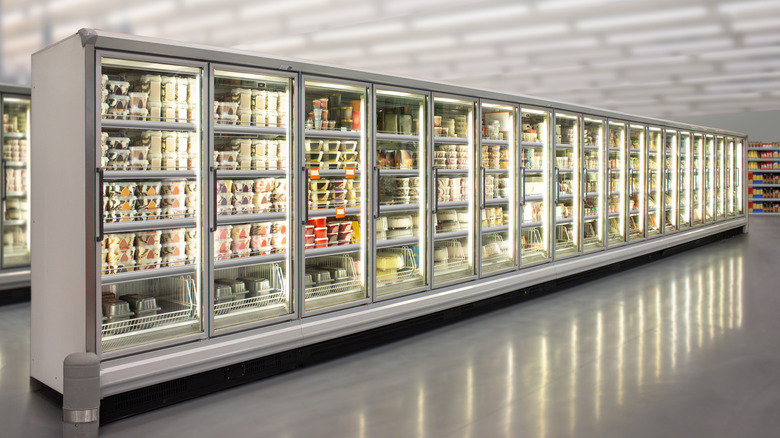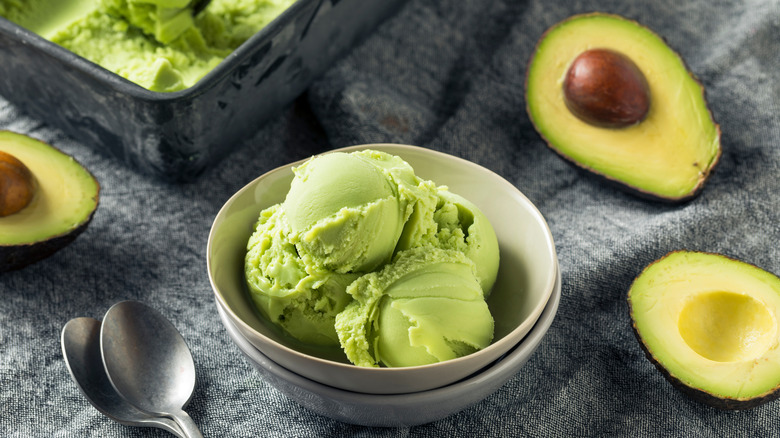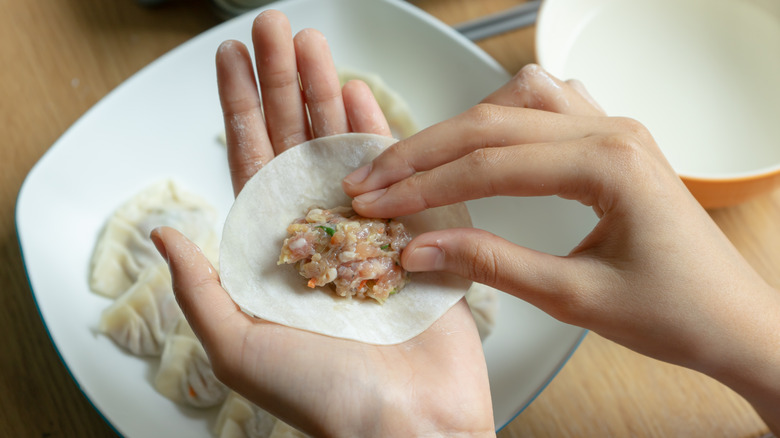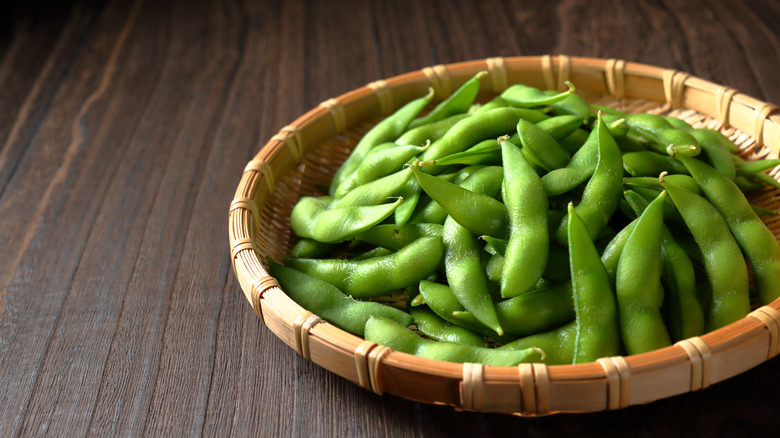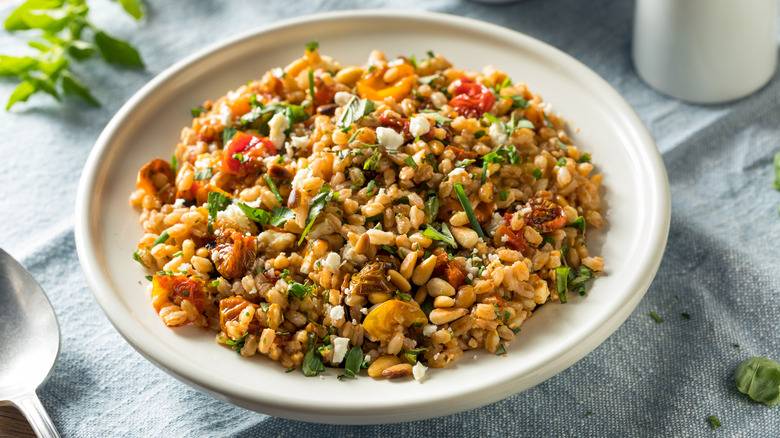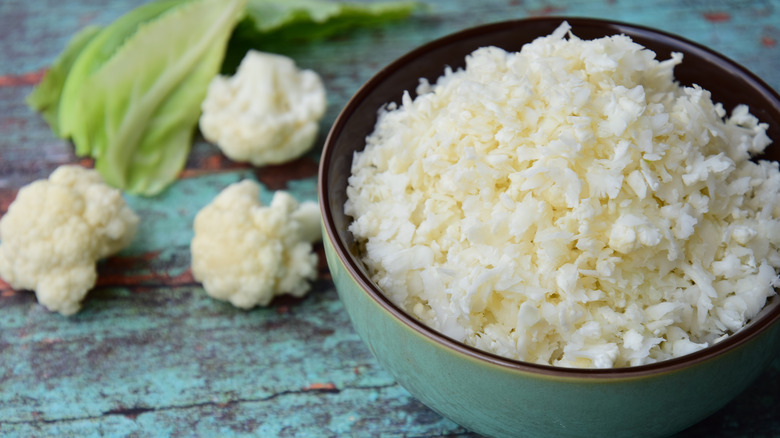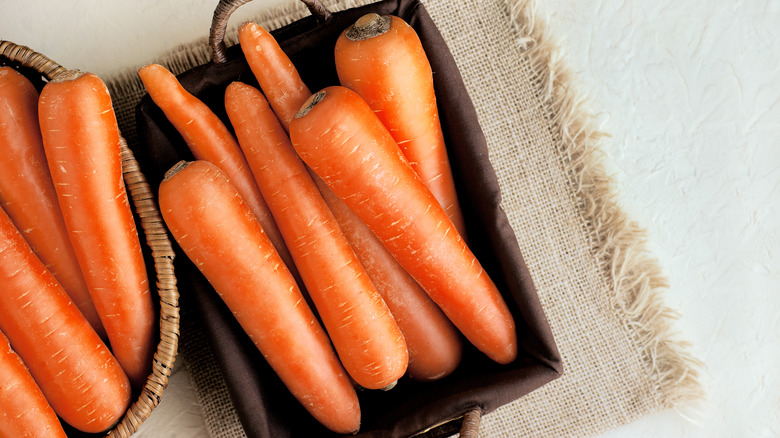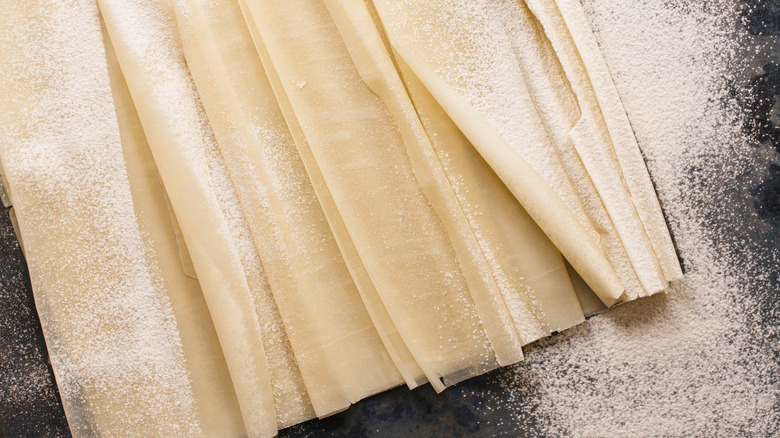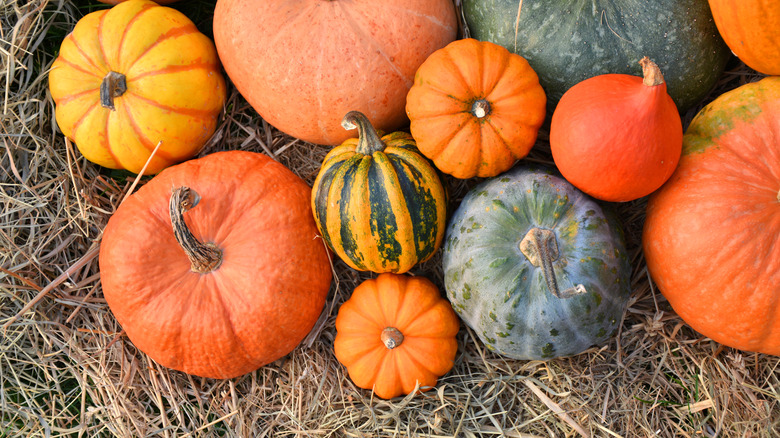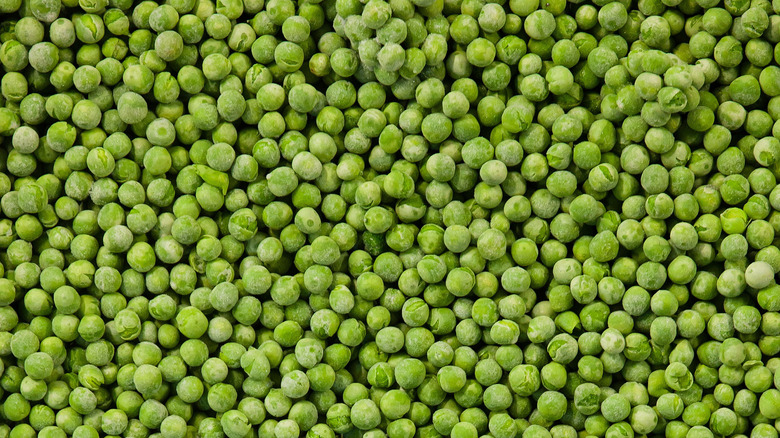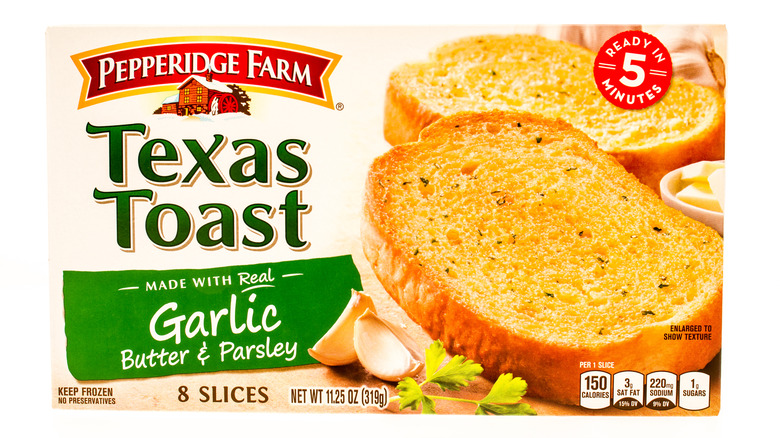Underrated Frozen Foods You Should Be Buying
While many hardcore chefs and nutritionists turn up their noses at the frozen aisle, a lot of delicious meals can come from the packages in those lowly freezers. Some of the most popular frozen foods, like mixed berries or dinosaur-shaped chicken nuggets, remain staples nonetheless, but there is a whole world of surprising frozen ingredients and meals that can make dinnertime delicious and easy.
And they can still be good for you, too. According to the Journal of Food Composition and Analysis, some frozen foods actually retain nutrients better than fresh ones. When fresh produce is stored at room temperature, it can lose some of the health benefits you get from it when it's at peak ripeness. When it's frozen at just the right time (usually at peak freshness and maturity), the process stops and the produce keeps its highest level of nutrient density.
Luckily, you can find all kinds of frozen produce and other products at the grocery store. The following list will walk you through the options for the next time you're feeling stumped while staring into the glass cases at the supermarket.
Avocado
Frozen avocado might not be the best way to make avocado toast, but it's a handy ingredient if you enjoy the taste of avocado in smoothies, salad dressings, and sauces. Most of the time, fresh avocados you buy at the store require constant monitoring to ensure that you use them at just the right time. If you break into them too early, you get chunks of hard, flavorless mush. Let them ripen for just a day too long, and you might as well throw the whole thing away. Well, that's not strictly true, and there are ways to ripen avocados properly, but it can still be frustrating to get the perfect avocado texture in your busy life.
But buying avocados frozen solves this common problem. Avocados, like most fruits and vegetables, are frozen at peak ripeness, so the produce stays perfectly fresh until you're ready to use it. And while frozen avocado can't always substitute fresh, frozen is a great option for dishes such as avocado ice cream, avocado smoothies, and even guacamole. Without the constant worrying that fresh avocados induce, you'll have more time to fully appreciate the frozen version.
Gyoza wrappers
Chef Chris Morgan of Washington, D.C. restaurant Maydan recommends buying frozen gyoza wrappers for making dumplings, potstickers, wontons, and more (via Insider). It turns out that many brands sell their gyoza wrappers frozen, making it easy to keep a stash on hand at all times in your own freezer. Plus, when you don't have to worry about the product going bad, you can hoard the gyoza wrappers all you want, assuming you've got the freezer space. After all, you never know when you'll have a craving for a giant pile of gyoza. Better to be safe than sorry.
Of course, you'll need to thaw the wrappers before using them, but luckily doing so won't affect the structural integrity of the gyoza itself. Many home cooks at Serious Eats suggest putting the frozen wrappers in the fridge to thaw, claiming this slower warming-up method doesn't affect the overall texture of the wrappers.
The frozen variety is also helpful so as to avoid the potential stress of trying to make your own gyoza wrappers. This shortcut allows you to enjoy well-made gyoza without sacrificing your time (or sanity). That's probably why Chris Morgan claims it's one of the best frozen ingredients you can buy.
Edamame
There's an easy way to have fresh edamame on hand whenever the mood strikes: buy them frozen. Securing this type of edamame cuts down on cooking time while retaining the fresh, springy flavor of this soybean. According to Kitchn, edamame is one of the best vegetables you can buy frozen — and one of the best vegetables to eat. With high levels of protein, it's a great option for vegetarians, but thanks to its fiber and omega-3 fatty acids, it can be a nutritious superfood for just about anyone.
In the freezer, edamame can last up to a year while retaining their full nutritional benefits, per Leaf. During those 12 months, you can stretch your culinary muscles and try different methods of cooking the edamame to see which option you like best. If you prefer edamame cold, you can simply let it thaw on the counter until it's ready to eat. Alternatively, all it takes is a quick minute or two in the microwave to have it served hot, perhaps with a light scattering of sea salt like in your favorite restaurant (via Kitchn). We recommend serving it with a little salt and lemon, but the options are infinite and you've got plenty of time to decide.
Grains
Not many people take advantage of the frozen grains available at most grocery stores. According to Tamra Scroggins of Daily Grill (via Insider), they're missing out. She recommends finding grains like brown rice, farro, and quinoa in the frozen aisle to cut down on time and guarantee perfectly cooked grains every time.
"I like them because some grains can take up to 30 minutes to cook, however, the frozen versions are all ready to go within minutes and cook at the perfect temperature," Scroggins told Insider. "It takes out all of the guesswork when cooking on the stovetop."
According to Popsugar, some frozen grains, like the Trader Joe's Frozen Organic Brown Rice, aren't quite as tasty as the steamed version, but they still beat the boring, time-consuming prospect of cooking some parboiled rice. Considering the frozen variety takes far less time to prepare than steaming dried rice does, it seems like a fair exchange. To heat up these frozen grains, you can nuke them for a few minutes in the microwave, or cook them on the stovetop (via Kitchn). You'll want to avoid thawing them in the fridge, as this can create a sticky, gummy texture. It's easier to just throw a bowl in the microwave anyway.
Cauliflower rice
If you're trying to avoid carbs and have settled on cauliflower as a healthy alternative to regular rice, we highly recommend opting for the frozen version. According to USA Today, store-bought frozen cauliflower rice has smaller grains than you can get when you make it yourself, which results in a quicker cooking process and, if you ask us, a better overall texture.
Buying cauliflower rice frozen also will likely save you a whole lot of money and cut down on waste. Refrigerated cauliflower rice doesn't take long to go bad, but its frozen counterpart can keep for at least 2 months (via Diethood). It's easy to pull it out of the fridge and heat it up to use as a substitute for rice in any kind of dish. This means that it's a great vegetable to have on hand, especially when you know it won't spoil immediately. To cook, you can simply microwave it or heat it up in a saucepan.
Carrots
Carrots aren't necessarily a go-to frozen vegetable for most people, but if you often find yourself with shriveled carrots at the bottom of the vegetable drawer, frozen is the way to go. Like fresh carrots, frozen ones can be used in all kinds of recipes, from smoothies to soup.
Carrots are nutrient-dense, and unlike some frozen vegetables, they don't lose any health benefits when frozen. Cassandra Suarez, a dietitian based in Boston, told The Healthy that carrots are an ideal frozen food because "the high levels of beta carotene and antioxidants have been locked into the vegetable through the freezing process, ensuring that its powerful health benefits like improved vision, beautiful skin, cancer prevention, and anti-aging don't disappear."
While it might be a little difficult to chop whole frozen carrots right out of the freezer, blending them is a good option if you're in a hurry. If you've got a little extra time, putting frozen carrots in the fridge to thaw provides an easy fix.
Phyllo dough
Phyllo dough is, simply put, one of the greatest inventions known to man. Some of the best pastries out there, like baklava, center on this dough, which bakes up to a wonderfully crisp texture in the oven. Keeping phyllo dough on hand in your freezer ensures that you're ready to wrap just about anything in that buttery, flaky dough at (just about) a moment's notice. Phyllo dough is often difficult to find fresh, so frozen is the way to go — unless, of course, you're embarking on handmade phyllo dough, in which case godspeed, friend. Anyway, the frozen variety is easy to use and the experts have already taken the time to roll each layer until it's paper-thin so you don't have to.
Even so, frozen phyllo dough requires some time in order to get the most out of it. Serious Eats recommends letting the dough thaw slowly in the refrigerator. Leaving it out on the counter will cause the layers to stick together because of the moisture that builds up when it comes to room temperature too quickly.
But if you're careful when using frozen phyllo dough, it can be a handy tool to accompany all kinds of ingredients. Having a few sheets waiting in your freezer can be just the inspiration you need to create something delicious.
Winter squash
Winter squash is highly nutritious and can be eaten with pretty much any kind of cuisine. In the depths of winter (or depending on your time of year and latitude, perhaps in the summer), it may be hard to find fresh squash in your area. For a quick fix, we recommend buying frozen winter squash that you can stow away throughout the year for perfectly ripened butternut, delicata, or acorn squash.
According to Muscle and Fitness, winter squash is an especially desirable frozen food, thanks to its health benefits, such as high levels of fiber, protein, and flavonoids. Not only do they taste good, but winter squash may help decrease your risk of cancer and help manage blood sugar levels (via Harvard School of Public Health).
One major benefit to buying winter squash frozen is that it eliminates the need to cut, peel, and remove the seeds from the squash, which can get pretty laborious. Most winter squash can be difficult to slice through due to its thick exterior. Frozen squash does the hard part for you, so all you have to do is empty the bag onto a sheet pan and season it to your liking.
Peas
According to Eat This, Not That!, frozen peas are one of the absolute best foods you can buy in the frozen aisle at the grocery store. Though they often go overlooked, peas are one of the healthiest foods you can eat. Full of protein and fiber, as well as a variety of important vitamins and minerals, peas can keep you satiated while providing you with all kinds of nutrients. Buying frozen peas doesn't decrease any of these health benefits, and they're easier to use than fresh peas. You can add them to any number of your favorite dishes, such as salad, pasta, fried rice, a rich, creamy risotto.
If you're feeling a bit more adventurous, you can let frozen peas shine in a mint and pea pesto or herbed pea soup, per Bon Appétit. So, while many people use a bag of frozen peas as an ice pack on a sore knee, we recommend promoting your peas for a more lofty purpose.
Texas toast
According to the owner and chef of Cee's Fried Chicken, Carnell Freeman, Texas toast is one of the best foods you can buy frozen. "My favorite frozen food is Texas toast garlic bread," Freeman told Insider. "I love it because it can be used as a side with almost any Italian meal, like lasagna and chicken parmesan, or alongside other meals where garlic, butter, and bread would be a great compliment."
Frozen Texas toast is obviously easier to cook than the alternative, but it also leaves the ratios of bread, butter, and garlic up to the pros. If you're looking for a flavorful addition to a meal but don't have the time to focus on an elaborate side dish, this is a great solution.
If you want to be sure the flavors aren't diminished in the freezing process, make sure you do your research beforehand. Taste of Home recommends Pepperidge Farm's product if you prefer your bread on the crispy side and Great Value's if you're on a budget.
